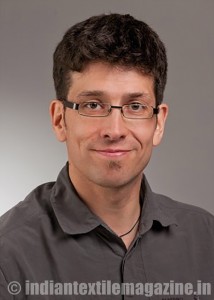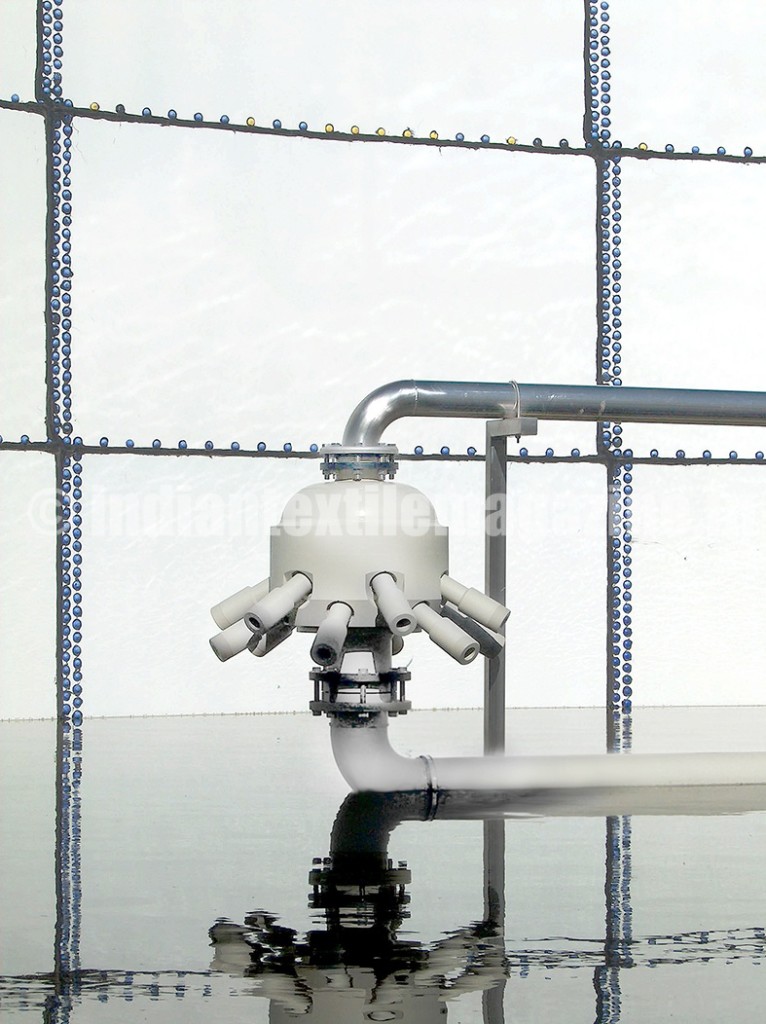Textile manufacturers can use caustic recovery plants (CRPs) from Körting Hannover AG to lower the quantity of caustic soda used in mercerising by impressive 85 per cent. In this way, the plants do not only reduce operating costs substantially but also pollution. The senior sales engineer Karl Hesse is responsible for the Körting Caustic Recovery Plants (CRP). In an interview, he explains how his company meets the changing demands of textile manufacturers for sustainable production.
Excerpts:
Mr. Hesse, as a member of VDMA, what aspects of sustainability are most important to your company?
Our company, founded 140 years ago, is now led by the fifth generation of the founder’s family, and in all that time, sustainability has been a way of life for us. As a midsize enterprise, we are proud to be able to say that we have employees who have been remaining loyal to us for over 40 years. So many years of service are important for us as a basis for continuous, constant progress.
How is Körting helping the textile companies that are beginning to pay attention to sustainability in their production process without increasing operating costs?
Especially the caustic recovery plants help Körting not only to make production processes in the textile industry more sustainable, but also to decrease the operating costs significantly. The plants complement the existing production machines, which means the mercerising machines. Their only purpose is to recover the caustic soda used for mercerising at the end of the process. This recovered lye can then be returned to the process, and no costly disposal is necessary. All this results in a much-improved eco footprint. In addition, as these plants use the hot water generated by the process itself, they are extremely energy-efficient.
The company is the global market leader in CRPs for the textile industry, and you are responsible for them…
Our system cleans the recovered lye, so that it can be reused in the process without any loss of quality. When it is used together with another Körting product, the swirl droplet separator, the resulting vapour condensate is of excellent quality. Due to its low pH value, it can be used in other processes, e.g., for washing in the mercerisation machine and for bleaching. This means that we offer a closed circuit for lye and water, called “zero drain”. Körting is highly diversified in these fields, so the customer can also benefit from our experience in exhaust gas treatment.
Körting has to fund its development of environmentally compatible machines and plants in advance. How do you justify your extra costs in comparison with your competitors in the market?
No other company in the world has been developing and manufacturing CRP for nearly 60 years. The experience we have gained in recovering weak lye from textile processes and converting a very substantial percentage of it back into usable, strong lye – caustic soda – finds its way into every project. Consequently, our more than 200 operational plants are customised solutions, not off-the-peg products. Körting engineers oversee every stage of construction, including commissioning. We value customer feedback highly and harness it to enhance operational availability of the plant, user friendliness and many other aspects.
Is it possible to estimate the financial savings due to caustic soda recovery?
Since we offer customised solutions, we are able to point out the financial savings at an early stage of the process. The most important factor is to reduce the plant operator’s lye consumption by 85 per cent. As a consequence, hardly any waste water is generated any more, which in turn reduces operating costs substantially. At all events, payback time is less than one year. After that, the operating costs for mercerisation remain permanently low. Annual savings of one million euros are realistic. The larger the plant, the greater the saving potential.
In India, one of the largest textile manufacturing markets in the world, Körting is represented by a subsidiary. What are the other important present and emerging markets for a company that exports 80 per cent of its output?
India is far and away our most important market. We believe that demand for our technology will remain high there in future as well. Our Indian subsidiary fulfils an essential function in servicing this market. Our customers in India are well aware of the quality of our plants, and are therefore prepared to make the more expensive investment in engineering from Germany. We are also active all over the world through a network of agencies and subsidiaries, and our plants now operate successfully in more than 50 countries.
Why does Körting participate in the VDMA sustainability “Blue Competence” campaign?
The additional costs of developing and manufacturing this kind of technology are much higher in Germany than abroad. So, we always take into account the “total cost of ownership” in order to explain the fact that investment, operating and disposal costs must always be seen in an overall context. The VDMA’s campaign supports German mechanical engineering companies in their efforts to convey this principle to the customer.
Körting Hannover AG has been a leading manufacturer of ejectors and vacuum technology and environmental engineering products since 1871. The components for process engineering are developed and made in Hannover, and are appreciated all over the world.
In caustic recovery plants for the textile industry, the company leads the world market. Together with its subsidiaries and representations, it employs over 330 people worldwide. Annual sales are in the range of 65 million euros. More than three quarters of its products are exported.
“We value customer feedback highly and harness it to enhance operational availability of the plant, user friendliness and many other aspects.”
– Mr. Karl Hesse, Senior Sales Engineer, Körting

